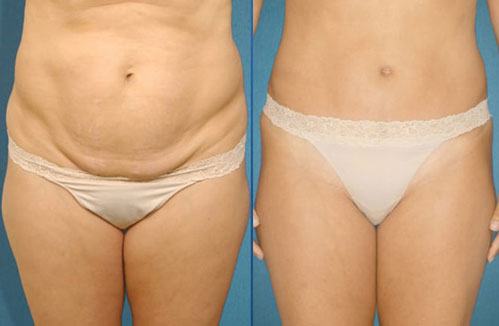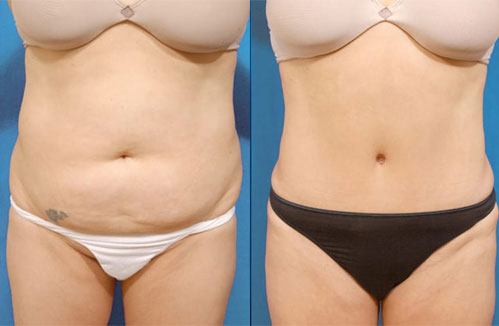Diastasis Recti


Diastasis recti is a medical condition that refers to a stretching of the abdominal fascia. It leads to separation between the left and right sides of the muscle extending across the front surface of the abdomen. You will notice physical changes in your body that no amount of exercise or diet can help. If untreated, this condition can begin significantly impacting your quality of life. Dr. Brent offers his experience to repair the damaged tissue.
For the best plastic surgery in Beverly Hills, schedule a consultation with Dr. Brent. He works closely with each patient to develop a treatment plan that fully matches your goals.
Table of Contents
Diastasis Recti Overview
The diastasis recti condition frequently occurs in women during pregnancy. The strain increases tension on the abdominal wall. In some cases, it is enough to cause the abdominal fascia and musculature to stretch, weaken, and eventually separate.
Women who have had multiple pregnancies are at an increased risk of developing diastasis recti. Each pregnancy will have put further strain on their abdominal tissue. Large weight gains can also produce significant separation of the muscles.
How Do I Know If I Have Diastasis Recti?
If you suspect you have this condition, we advise coming in for an examination. Dr. Brent will be able to provide a complete exam and help you determine the best path of action.
The first sign is the presence of extra skin and soft tissue in front of the abdominal wall. As pregnancy progresses, diastasis recti can cause the top of the pregnant uterus to bulge outward. This forms a ridge down the center of the abdomen. This ridge can become increasingly visible when the abdominal muscles are straining or contracting during any form of physical exertion.
Do I Need Treatment?
Fortunately, diastasis recti is not dangerous itself. Still, several potential physical and aesthetic complications are associated with this condition. These include:
Why Can’t I Get My Pre-Pregnancy Body Back?
Diastasis recti permanently stretches the tissues between the abdominal muscles. So, you will find that abdominal exercises and diet programs will not be effective solutions. No matter how hard you work, they won’t restore your abdomen to pre-pregnancy shape.
However, there are treatment options like the Mommy Makeover. Dr. Brent offers several options to restore your body to its previous state and restore confidence in your body.
The best method of dealing with the issue is an abdominoplasty or tummy tuck surgery. This will repair your abdominal tissue and correct the symptoms associated with diastasis recti. During your consultation, Dr. Brent will work with you to decide on a treatment plan.
Abdominoplasty for Abdominal Separation
There are a variety of abdominoplasty procedures that can correct diastasis recti. And Dr. Brent will go over them with you during your initial evaluation. During our examination, we will evaluate three key factors:
- Quality of your abdominal skin
- Severity of your diastasis
- Degree to which your skin sags
The Mini Tummy Tuck
Mini Tummy Tuck option involves tightening up to the belly button, without going above it. This option is generally more limited in its effectiveness. However, it requires less downtime and recovery. It is a great option for patients with less damage to their tissue but still want to rejuvenate their body.
The Standard Tummy Tuck
Standard Tummy Tuck option involves making a longer incision. We will be able to remove a considerable amount of skin and fat from the lower abdomen. Liposuction may also be performed in conjunction with a tummy tuck in order to maximize the aesthetic results.
Hybrid Abdominoplasty
Dr. Brent pioneered the hybrid abdominoplasty technique as a short incision procedure. It completely tightens the diastasis from the pubic area to the breast bone via a short incision. Some skin is then removed, so the procedure can tighten the entire abdominal fascia, correcting the rectus diastasis.
For patients who have had a C-section delivery, this technique avoids creating any new abdominal scarring. It utilizes the existing C-section scar for the incision.
Extended Full Tummy Tuck (Abdominoplasty) with Flank Extension
The incision of a full tummy tuck is extended past the hip-to-hip location to remove hanging skin located on the side of the abdomen. Also, this is an optimal procedure for patients who have lost a good deal of weight and have skin hanging in front and to the side of the abdomen. Liposculpture will usually be performed at the same time.
Body Lift
An incision is made from the center of the back. The patient is repositioned to the supine position. This is a common procedure for patients who have lost a large amount of weight.
Modified Hybrid Tummy Tuck
This procedure is similar to that of the hybrid tummy tuck but involves a vertical incision below the belly button. This allows a significant tightening of the skin above the umbilicus in addition to the lower abdomen. During this procedure, the abdominal musculature and fascia are tightened from the pubic area to the breast bone. As with many of these procedures, liposculpture may be performed as well.

Recovery and Results
The amount of time for recovery will depend on your individual procedure. Most patients can expect about 2-6 weeks of recovery. However, you can minimize downtime by giving yourself plenty of rest and following Dr. Brent’s instructions.
During your recovery time, avoid any strenuous activity. Your body will appreciate rest, not only giving you shorter recovery time but improving your final results.
Schedule a Consultation
Take your pre-pregnancy body back! Schedule a consultation with Dr. Brent today to take the first step. During your one-on-one meeting, you will have a chance to fully express your goals and expectations.
Dr. Brent is here to answer all of your questions. For more information, contact us today to treat your diastasis recti!


